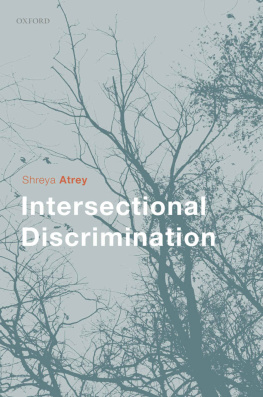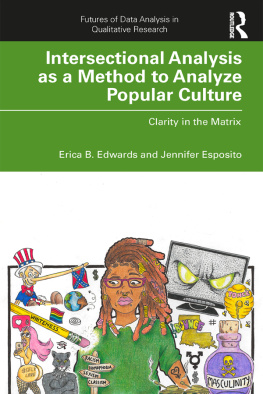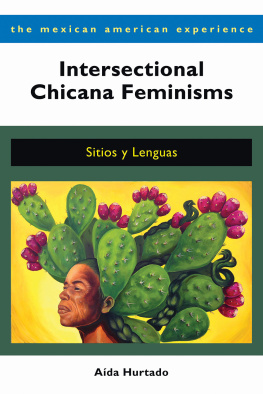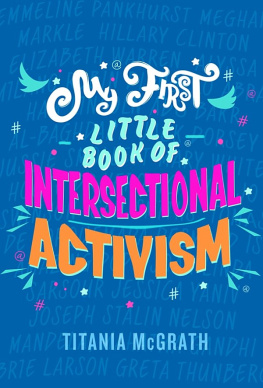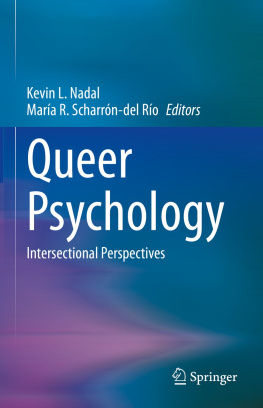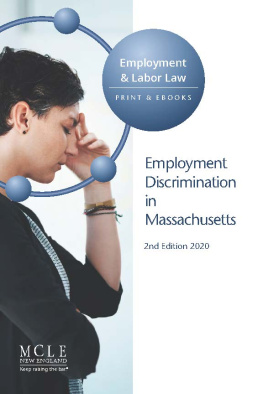Shreya Atrey - Intersectional Discrimination
Here you can read online Shreya Atrey - Intersectional Discrimination full text of the book (entire story) in english for free. Download pdf and epub, get meaning, cover and reviews about this ebook. year: 2019, publisher: OUP Oxford, genre: Romance novel. Description of the work, (preface) as well as reviews are available. Best literature library LitArk.com created for fans of good reading and offers a wide selection of genres:
Romance novel
Science fiction
Adventure
Detective
Science
History
Home and family
Prose
Art
Politics
Computer
Non-fiction
Religion
Business
Children
Humor
Choose a favorite category and find really read worthwhile books. Enjoy immersion in the world of imagination, feel the emotions of the characters or learn something new for yourself, make an fascinating discovery.
- Book:Intersectional Discrimination
- Author:
- Publisher:OUP Oxford
- Genre:
- Year:2019
- Rating:3 / 5
- Favourites:Add to favourites
- Your mark:
- 60
- 1
- 2
- 3
- 4
- 5
Intersectional Discrimination: summary, description and annotation
We offer to read an annotation, description, summary or preface (depends on what the author of the book "Intersectional Discrimination" wrote himself). If you haven't found the necessary information about the book — write in the comments, we will try to find it.
Intersectional Discrimination — read online for free the complete book (whole text) full work
Below is the text of the book, divided by pages. System saving the place of the last page read, allows you to conveniently read the book "Intersectional Discrimination" online for free, without having to search again every time where you left off. Put a bookmark, and you can go to the page where you finished reading at any time.
Font size:
Interval:
Bookmark:
SHREYA ATREY


Great Clarendon Street, Oxford, OX2 6DP,
United Kingdom
Oxford University Press is a department of the University of Oxford. It furthers the Universitys objective of excellence in research, scholarship, and education by publishing worldwide. Oxford is a registered trade mark of Oxford University Press in the UK and in certain other countries
Shreya Atrey 2019
The moral rights of the author have been asserted
First Edition published in 2019
Impression: 1
All rights reserved. No part of this publication may be reproduced, stored in a retrieval system, or transmitted, in any form or by any means, without the prior permission in writing of Oxford University Press, or as expressly permitted by law, by licence or under terms agreed with the appropriate reprographics rights organization. Enquiries concerning reproduction outside the scope of the above should be sent to the Rights Department, Oxford University Press, at the address above
You must not circulate this work in any other form and you must impose this same condition on any acquirer
Crown copyright material is reproduced under Class Licence Number C01P0000148 with the permission of OPSI and the Queens Printer for Scotland
Published in the United States of America by Oxford University Press
198 Madison Avenue, New York, NY 10016, United States of America
British Library Cataloguing in Publication Data
Data available
Library of Congress Control Number: 2019945374
ISBN 9780198848950
eISBN 9780192588838
Intersectional Discrimination. Shreya Atrey,
Oxford University Press (2019). Shreya Atrey
DOI: 10.1093/oso/9780198848950.001.0001
Links to third party websites are provided by Oxford in good faith and for information only. Oxford disclaims any responsibility for the materials contained in any third party website referenced in this work.
To my mother, for her radical moral courage;
and to my father, for being the ultimate feminist
I owe the greatest debt to Sandra Fredman for being my guru and intellectual guide for this project. Gautam Bhatia, Miles Jackson, Alison Pryce, and Raphale Xenedis have been generous readers of significant parts of the book. Mark Bell, Meghan Campbell, Chris McConnachie, Michael Ford, Beth Gaze, Denise Raume, Nazila Ghanea, Laura Hilly, Tarunabh Khaitan, Fiona de Londras, and Kate ORegan have provided valuable input at various stages of this project. Alan Bogg, David Oppenheimer, and Tonia Novitz have been greatly supportive and enthusiastic in seeing this book through. The painstaking comments of two anonymous reviewers proved extremely useful in getting the book together. The Centre for Employment and Labour Relations Law at the Melbourne Law School provided a welcoming community and comfortable space for writing the final parts of the book. Members of the Berkeley Comparative Equality and Anti-Discrimination Law Study Group have done the same over many years.
My parents, Archana and Pradeep, have enabled my work by providing the necessary distance from it, through quality breaks and reminders to stay grounded. My sister, Vartika, and brother-in-law, Rohit, have managed a robust system of long-distance care for me. My partner, Felix, has been an exceptional sparring partner for critical thoughts explored in this book, in addition to offering unimaginable love and sustenance.
My heartfelt thanks to all.
Peel Law Association and Melissa Firth v Selwyn Pieters and Brian Noble 2013 ONCA 396
Constitution of India 1950
Constitution of the Republic of South Africa 1997
Constitution of the Republic of South Africa (Interim) 1993
Canadian Charter of Rights and Freedoms 1982
Equality Act 2010
Treaty of Amsterdam, Amending the Treaty on European Union, The Treaties Establishing the
Optional Protocol to the Convention on the Elimination of Discrimination against
| AIR | All India Reports |
| BCHRT | British Columbia Human Rights Tribunal |
| BCLR | Butterworths Constitutional Law Reports |
| CEDAW | Convention on the Elimination of all Forms of Discrimination Against Women |
| CNR | Canadian National Railway |
| CRPD | Convention on the Rights of Persons with Disabilities |
| CUP | Cambridge University Press |
| DCLD | Discrimination Case Law Digest |
| DLT | Delhi Law Times |
| DUP | Duke University Press |
| ECHR | European Convention on Human Rights |
| ECtHR | European Court of Human Rights |
| ECR | European Court Reports |
| ETS | European Treaty Series |
| EWCA | England and Wales Court of Appeal |
| GPH | Gyan Publishing House |
| HL | House of Lords |
| HM | Her Majestys |
| HRTO | Human Rights Tribunal of Ontario |
| HUP | Harvard University Press |
| ICR | Industrial Cases Reports |
| IRLR | Industrial Relations Law Reports |
| KTP | Kitchen Table Press |
| MEC | Member of the Executive Council |
| NASWP | National Association of Social Workers Press |
| NSR | Nova Scotia Reports |
| NYUP | New York University Press |
| OJ | Ontario Judgments |
| ONCA | Ontario Court of Appeal |
| OUP | Oxford University Press |
| PUP | Princeton University Press |
| RUP | Rutgers University Press |
| SA | South Africa |
| SACC | South African Constitutional Court |
| SC | Supreme Court |
| SCC | Supreme Court of Canada |
| SCR | Supreme Court Reports |
| SEP | South End Press |
| UKEAT | United Kingdom Employment Appeal Tribunal |
| UKET | United Kingdom Employment Tribunal |
| UKSC | United Kingdom Supreme Court |
| USCA | United States Court of Appeals |
| UUP | Uppsala University Press |
| WLR | Weekly Law Reports |
discrimination. Articles, even books, have been spent in finding ways of translating intersectionality theory into the precincts of discrimination law practice. Despite this, the framework of discrimination law has proven to be too resistant to have been able to transform the will to address intersectionality into a way of redressing it in discrimination law. Thus, the project of transforming the will into a way may be reimagined as the project of transforming discrimination law per se. Instead of having intersectionality awkwardly fit the single-axis model, discrimination law could be re-centred around intersectionality. If so, then how should non-discrimination guarantees be articulated and interpreted? Who should they protect? How should discrimination be defined? How should it be proven? Which remedies should be ordered? In other words, how can discrimination law practice be reimagined to realize intersectionality?
Font size:
Interval:
Bookmark:
Similar books «Intersectional Discrimination»
Look at similar books to Intersectional Discrimination. We have selected literature similar in name and meaning in the hope of providing readers with more options to find new, interesting, not yet read works.
Discussion, reviews of the book Intersectional Discrimination and just readers' own opinions. Leave your comments, write what you think about the work, its meaning or the main characters. Specify what exactly you liked and what you didn't like, and why you think so.

